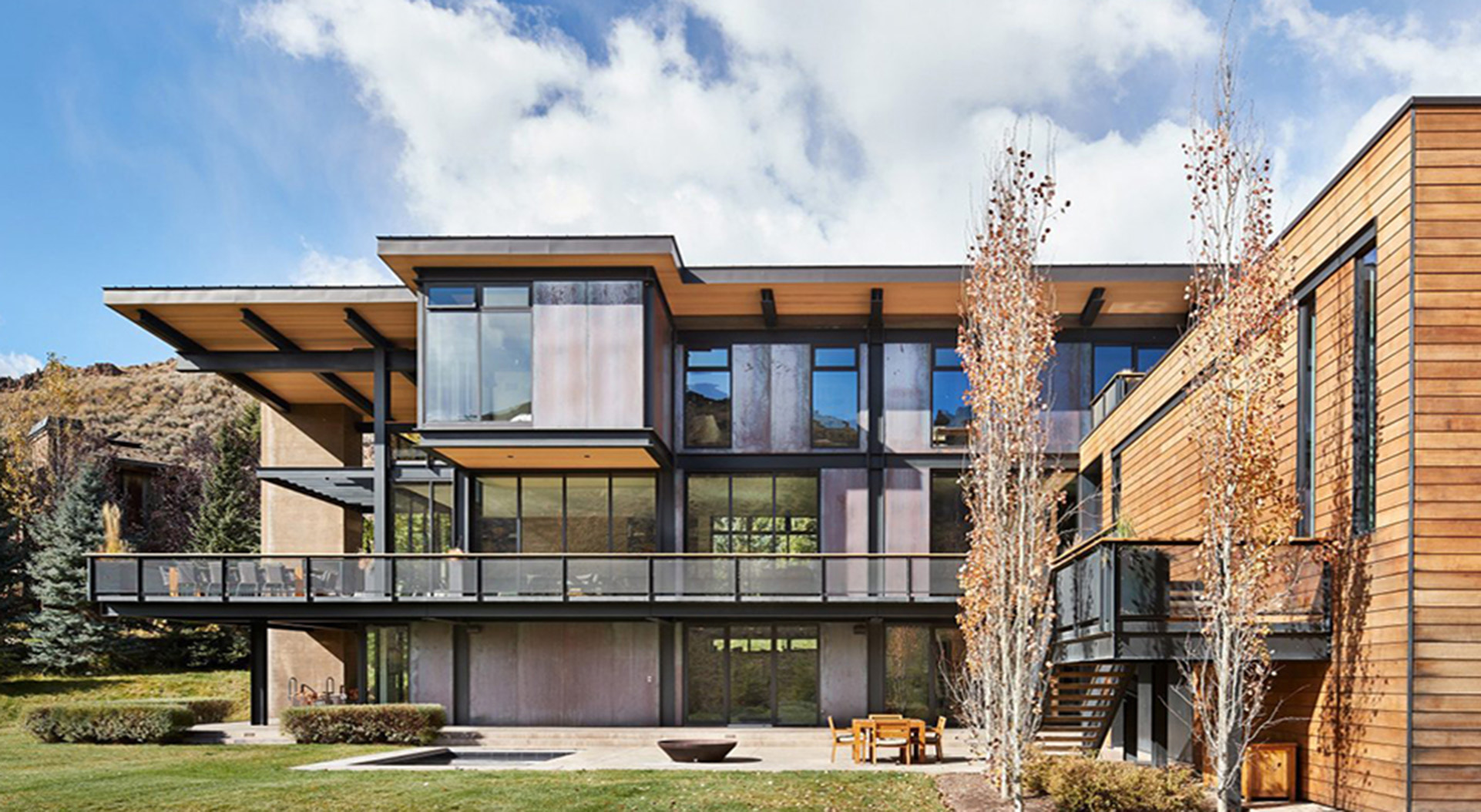
Stucco Vs Siding – Comparing Exterior Home Wall Claddings Cost
This article made possible thanks to sponsors and viewers like you.
Buy TicketsThe ultimate face-off between two heavyweight champs of the cladding game: Stucco and Siding.
We’re diving deep into the history, the glam, the grit, and all the nitty-gritty details that’ll help you decide which contender is worthy of wrapping up the fortress you call home.
First up, in the red corner, we’ve got Stucco – this fighter’s not some newbie on the block. We’re talking ancient, with a capital A. Stucco’s been holding up walls since before your great-great-great- (you get the idea) grandparents were a twinkle in the cosmos. The Romans? Greeks? Egyptians? They were all about that stucco life. Fancy a trip to Pompeii, minus the volcanic eruption? The walls there have seen things, survived stuff – thanks to stucco.
And if you swing by the crib of Hadrian’s Villa from 140 BCE, stucco’s still standing strong. Outdated? Please. Stucco’s like fine wine – just gets better.
Swinging in from the blue corner, we’ve got the timeless beauty, Wood Siding. Don’t let the ‘wood’ part fool you; this isn’t just any siding. It’s the original gangster of wall cladding. From the ancient Horyuji Temple – which, by the way, still stands as the world’s oldest wooden building – it’s clear this contender has what it takes to go the distance. With the right care, wood siding isn’t just surviving; it’s thriving.
Enough history, though. Let’s throw down on what you came here for – Stucco vs. Siding, in a no-holds-barred battle of curb appeal, durability, and just pure, unadulterated style.
When it comes to costs and throwing up your cladding in record time, there’s a bit to chew over. Stucco’s like that meticulous artist, taking its sweet time but leaving you with a masterpiece that’s durable, energy-efficient, and frankly, a sight to behold. Siding, however, is like the cool, efficient cousin. It comes in various flavors – fiber cement, aluminum, vinyl, you name it – and it can dress up your house quicker than you can say “increase my home’s resale value.”
Speaking of which, if you’re looking to flip your fortress or ensure your dynasty’s home stays top-notch, both stucco and siding are throwing punches. Stucco’s heavyweight durability means it’s in it for the long haul, while siding offers versatility and ease of maintenance that can keep your curb appeal sharp and savvy.
But hold up, before you throw your lot in with one or the other, remember this – choosing between stucco and siding isn’t about finding the ultimate champion. It’s about knowing which one dances to the beat of your drum, which one lights that fire in your belly and makes you say, “Hell yes, that’s the look my castle deserves.”
So, whether you’re breathing life into an ancient relic or crafting your legacy from the ground up, listen to the tales of stucco and siding. Let their stories guide you. After all, every kingdom needs its walls, and only the best will do for the likes of Brian Cornwell and, of course, you.
Stucco:
When you’re diving into the world of home exteriors, let me tell you something, it’s damn near impossible not to get your heart tangled up in stucco. We’re talking about that perfect, unblemished finish that just screams luxury and wraps a house up like it’s a gift to the world. This isn’t some new kid on the block either; from the grand dames of historical avenues to the sleek lines of today’s architectural wonders, stucco is the canvas of choice for those in the know.
Now, if you really want your mind blown by what stucco can do, you gotta check out this crown jewel over in Bel Air. Picture this: 864 Stradella Road, Los Angeles, California. This is not just any piece of real estate; it’s a sprawling 14,219 square-foot testament to modern luxury, sculpted by the hands of the genius architect Paul McClean. The way stucco is used here? It’s not just a finish; it’s a statement, blending seamlessly with the home’s stellar design.
And brother, let me tell you, it’s a sight to behold. It stands as a shining beacon of what happens when you take something classic, something that’s been around, and you give it a modern twist under the deft hands of someone who truly knows their stuff. It’s a perfect marriage of old-world charm and contemporary finesse, proving once and for all that stucco isn’t just about covering up; it’s about making a bold statement.
That’s the magic of stucco – it’s versatile, it’s timeless, and when done right, it elevates a building from just another structure to a piece of art. And in the world of high-stakes, no-holds-barred architecture, where every detail counts and every finish speaks volumes, using stucco is how you make history without saying a word.
Stucco installation:
So, you got your stucco, right? This stuff’s like the ancient warrior of building materials, been around for ages, flexing and changing with the times. We’re talking a glow-up from its basic lime-based roots, to chilling with Portland cement, then straight-up morphing into today’s Hulk version with polymer all jacked up in it.
Now, some eggheads figured out how to pump up stucco to be harder, better, faster, stronger, but guess what? It kind of screwed the pooch on breathability. That means it’s about as good at passing water through it as I am at losing a race (hint: I don’t lose). Normally, that wouldn’t make anyone bat an eyelash, but roll this around in your head: modern castles are sealed tighter than my gym shorts and stuffed with insulation so they’re cozy as hell. But here’s the kicker – if your house can’t sweat it out, you’re basically inviting it to rot from the inside. It’s like trapping all that post-workout funk in your clothes. Not cool.
Back in the day, laying down stucco was like making a sandwich – a scratch coat, a brown coat, and then slapping on the finish like it’s the top slice of bread. Guess what? We’re still rocking that technique, but with a twist. Now, you gotta lay down a waterproofing membrane first, like slathering on some anti-stink spray before a run. Then, you pile on the usual layers, but don’t forget to slip in an airgap drainage layer. This little space is like the VIP lounge for moisture, letting it sneak out instead of crashing your wall’s party.
But here’s where a bunch of folks drop the ball – skipping the VIP lounge. Fast forward a few years, and bam, your paint’s peeling off like cheap stickers, and your walls are rotting faster than forgotten leftovers. Time to wise up and get with the program.
Now, if you’re living it up in some hot, dry spot, like kicking back in the desert, you might think you can dodge this bullet. I mean, you could, but only if you’re cool playing Russian roulette with your house. In wetter zones, though, not having that air gap is like well… You just don’t do it.
You might not find this gold nugget of advice in your granddad’s stucco handbook, and that’s because it’s time they get an upgrade. Life’s changed, homes have changed, and it’s about damn time our approach to stucco does too. So let’s not live in the past, unless you’re into the whole crumbling house aesthetic.
Siding:
Let’s talk about the wonder of James Hardie fiber cement siding, and fiber cement in general. That’s what I slapped on my own castle. Why? Because if I’m dropping my hard-earned cash on something, it better last long with zero maintenance (I just don’t have time to tend to it). Now, don’t get it twisted; if my pockets were deeper, I’d have gone full-on stone cladding. Picture it: fortress vibes, looking untouchable. But then reality checks in – have you seen what that costs?
So there I was, fiber cement siding in the lead. But you know how it is, always got to keep your options open. Stucco was in the mix, flirting with the idea. But then, BAM! In comes Brazilian Walnut, aka IPE, knocking everything else out of the park. I threw in some sections with this hardwood cladding for that extra sizzle. It’s tougher and more dense than virtually most woods on the planet, barely needs a touch-up, and it’s punching centuries on the clock. Also consider: Accoya, thermally modified woods, etc.
Now, when we get down to the brass tacks of siding, fiber cement’s king of the hill these days. Affordable, struts on the job site like it owns the place, laughs in the face of fire, and it’s got a shelf life that gives some ancient ruins a run for their money. But hey, let’s not pretend it’s a one-siding game. We’ve got the whole team warming up – natural wood, steel, aluminum, vinyl, and the MVP, fiber cement.
Wood siding, that’s your classic right there. It’s like the king of sidings in no-wildfire zones. But toss in some rain, throw in a chill, and you might wanna tap in fiber cement. It’s the heavy hitter in the durability department.
Metal siding’s where I get picky. Aluminum? Please. I’ve seen paper airplanes hold up better in a breeze. Steel, though, now you’re speaking my language. Done right, it stands tall, proud, throwing shade at Father Time alongside metal roofs.
Now, if your wallet’s crying but you have to make a move, there’s always vinyl. But let me lay it out – that’s the cheapest option with the lowest performance. It’s like investing in future failure. Plus, it’s got this weird knack for growing a fur coat of mold. No thanks. I’d rather spend a few extra bucks and go for the fiber cement option.
Siding installation:
You see, installing siding isn’t just slapping some pieces of wood or vinyl onto the side of your building. Oh no, it’s an art form, a science, a ballet of construction that requires precision and, let’s be honest, a bit of manpower.
Now, you’ve got different styles of siding, each with its own swagger, like the tongue and groove or the shiplap. These aren’t just fancy words; they’re profiles that decide how your siding is going to look – whether it’ll be strutting its stuff horizontally or vertically. And how do you secure these bad boys? With nails, my friend. But not just any haphazard pounding in. Depending on whether Mother Nature decides to unleash her fury with high winds in your area, your installer’s have to make a choice: face nail or blind nail.
Blind nailing is like the ninja of siding installation – the nails are hidden, concealed by the next board in line, like a stealth move. On the flip side, face nailing is like standing in the spotlight with that nail head exposed for the world to see. It’s tougher against high winds, sure, but it’s not going to win any beauty contests.
Now, let’s talk about the evolution of the siding game. Back in the day, it was all about slapping on a weather barrier and then the siding, and you’re good to go. But no, we had to go and make our homes more airtight, shove more insulation in there till we realized, oops, we’re trapping moisture like it’s a VIP club. Cue the necessity for a drainage gap (rainscreen) – yeah, that’s right, an entire dedicated layer behind the siding just to let water and moisture make a grand escape. This ain’t just construction; it’s thoughtful design. So now, you’ve got a trio of layers working in harmony: the weather barrier, the drainage gap, and the siding itself.
And let’s not forget the modern marvels making this all a breeze, like the PacTool Gecko Gauge, which spaces each board with the finesse of a seasoned pro. No guesswork, just precision. But even with modern tools, you still need to account for all the slowdowns, such as trim, corners, butt end flashing of joints, and so on.
Cost of stucco vs. siding
Let’s dive into my own saga. I decked out my sprawling 4800 square foot palace, complete with more corners than a NASCAR race, in fiber cement siding. When the dust settled, my bank account was lighter by about $24,186. That’s right – do the math – that shakes out to just a smidge over 5 bucks a square foot, about $5.03 to be exact. But hey, don’t just take my word as gospel. Your mileage may vary, depending on how those installers whip out their tape measures and tango with your walls.
Now, when my sights were set on stucco – that smooth, sultry finish that screams class – the story got a bit richer. The bids I got were dancing between $10 and $15 a square foot. Oh, and don’t forget, I’m chilling in Colorado. The scene might be different if you’re kicking it in Cali, basking in Florida, or hunkered down in New York. Point is, just like the game of life, the market’s the boss.
Speaking of markets, what about material costs? While prices do the tango depending on where you are, I found this wild ride of cost variance between siding and stucco materials that would make your head spin. I mean, I stumbled upon James Hardie siding that was jacked up 300% at one spot, and then struck gold with the Lowes Pro program. It’s like finding a designer suit at thrift store prices – you have to shop smart.
Oh, and for a bit of perspective, building this house into my dream pad racked up electrical rough-in costs to the tune of 60 grand. But that’s Colorado, baby. Had I built this fortress in Ohio, we’d be talking about slashing those rough-in costs in half. Siding costs are no different, location matters!
Stucco vs. siding labor and installation time
Installing stucco ain’t like your grandma’s apple pie recipe; it’s tough. It’s a real game of patience and precision, not just slapping some mud on the wall and calling it a day. It’s a step above your run-of-the-mill siding job in complexity and time suck. But, my friends, the difference isn’t as vast as the Grand Canyon or as complicated as my relationship with fame.
Now, here’s the kicker with stucco — it’s a diva. It demands its beauty rest, time to cure and set just right. On the flip side, siding is ready to paint the moment after it’s up on the wall. You slap it on, give it a quick once-over with paint, and boom! Your exterior is finished. And if you’re not about that paint life, order that siding like it’s a tailored suit: pre-painted and ready to shine without the hassle.
But wait, there’s a hidden time suck with siding — rainscreen details. Suddenly, siding isn’t the quick stroll in the park it once seemed. It starts inching closer to stucco territory, especially when you throw in some exterior insulation into the mix. If you’re adding furring strips and headlok screws over exterior insulation as a means to achieve a siding nailer base, then the installation time goes up 3 fold.
Durability and Maintenance
Let’s dive into the gritty world of stucco first. Picture this – a rugged, cement-based gladiator that clads the exterior of your castle… I mean, your home. This bad boy isn’t just tough; it’s a survivor. We’re talking a lifespan that laughs in the face of decades, easily stretching 50 to 80 years, maybe even throwing a middle finger to the century mark. Got some scars? No worries. Stucco is like that warrior that just won’t quit – tough as nails and always ready for a quick touch-up or a full-on makeover with minimal fuss.
But, and this is a big but, stucco’s got its Achilles’ heel. It drinks in moisture like a sponge at a kegger, which can lead to some finely-tuned cracking action. Plus, yeah, you gotta break out the paintbrush every decade or so. Yet, put it in the ring against wildfires, hurricanes, or whatever Mother Nature’s got tucked up her sleeve, and stucco stands tall, a true contender.
Now, let’s switch gears to the contender in the other corner: fiber cement siding. We’re not talking about your run-of-the-mill lightweight contender here; we’re eyeballing the heavyweight champ of the siding world. Fiber cement might just be on the same longevity tier as stucco, promising a solid 50-year career without so much as batting an eyelash at maintenance – barring a paint job every 15 years, of course.
But here’s where things get spicy. You ever seen a baseball meet a regular old siding plank? It’s not pretty. Fiber cement, though, especially those extra-thick planks that have been juicing up, can take that hit and laugh it off. And when the apocalypse comes raining down fire, guess what’s standing tall amidst the inferno? Fiber cement, baby. It’s like the Bruce Willis of siding materials – tough, resilient, and surprisingly good-looking after a rough day.
A few years back – about five if we’re counting – I got my hands dirty with one of those heavyweight fiber cement planks. Buried it, forgot about it, and when I dug it up, it was like unearthing a treasure that hadn’t aged a day. Just shook off the dirt, and it was ready to go another round.
Now, obviously, I’m sweet on fiber cement for its rhino-like durability, but let me lay down some wisdom – you gotta get the installation right. There’s a whole playbook of rules to follow, like keeping it off the ground and making sure you’ve got your flashing game on point. Miss those steps, and you’re inviting trouble to your doorstep, the kind that’ll have you ranting online instead of basking in the glory of your impenetrable abode.
Insurance costs and natural resistance to the elements
You got options like fiber cement and steel siding, which are basically the bouncers outside the club, keeping the fire at bay. These materials don’t mess around; they’re like that moody, impenetrable front you put up when someone’s trying to get on your nerves. Choose them, and your insurance company is gonna give you a nod of respect in the form of lower costs. Why? Because they know your house won’t go up in flames faster than a pyromaniac at a bonfire.
On the flip side, you’ve got vinyl and wood siding. Now, don’t get me wrong, they’ve got their charm, but when it comes to standing up to fire, they’re about as useful as a screen door on a submarine. They burn with the kind of enthusiasm I reserve for a good poontang or closing a sweet deal. So, if you’re wrapping your house in this stuff, don’t expect any favors from your insurance agent. They see vinyl and wood, and all they see are dollar signs and risks.
But wait, there’s more. Fire isn’t the only game in town; we’ve also got the mighty wind to consider. You know, the kind so strong it could rip the toupee off a TV evangelist mid-sermon. Vinyl and aluminum siding can get torn off your house in high wind conditions. But let’s not get it twisted; even the more robust materials like steel, fiber cement, and wood could technically meet the same fate under the wrath of Mother Nature’s bad hair day. However, here’s where the plot thickens – manufacturers these days are like mad scientists in their labs, cooking up wind load data and special install techniques that make it less likely for your house to go bald in a windstorm.
Architectural Appearance
Let me tell you, it’s more than just picking out a pretty dress for your house. It’s about making a decision that suits your lifestyle, budget, and, yeah, your abode’s street cred.
Now, if you’re torn between fiber cement or stucco, listen good: the real game-changer here is going to be how these contenders look flexing on your casa and how they make your wallet feel. Pick the champion that not only knocks you out with its looks but also doesn’t sucker punch your bank account.
But oh, when the contenders like wood, vinyl, and their rowdy crew enter the ring, that’s when the real fight starts. You’re no longer just choosing the prom queen; you’re betting on a street fighter. Siding presents itself like a high-maintenance diva, demanding your attention now and then, while its opponent, stucco, stands there like a rock-solid bouncer, less likely to catch fire under pressure.
Now, I love the allure of both siding and stucco. These old dogs have been in the fight game longer than I’ve been building. They ain’t bowing down anytime soon. Stucco? She’s the sleek, smooth operator, perfect for houses strutting a modern vibe with their minimalist getup.
But siding, oh siding, it’s like that classic rock album – it’s got layers, details, and soul. It’s your go-to for that homey, traditional feel, boasting styles that’ll take you back in time or even give you that cutting-edge look. We’re talking clapboard, bevel, you name it; it’s like the wardrobe of a style icon, versatile and timeless. Hell, my mountain retreat rocks a smooth Hardie siding with metal trim detail, screaming ‘modern’ like it’s waiting for its magazine cover shot.
And hey, if you’re chasing the dream of that woodsy charm without signing up for a lifetime of upkeep, keep your eyes peeled for stained fiber cement with that raw, sawmill pattern. Woodtone, L.P. Smart Siding – these names should be on your radar like hot stocks.
Even more comparison thoughts:
Stucco vs. vinyl siding
Stucco is the way to go here; the answer is too darn easy. Vinyl siding is so cheap and flimsy in comparison to stucco. If you can afford stucco, why would you opt for a more economical solution that performs far worse?
Stucco vs. wood siding
This is a tough one to answer as stucco clearly has all the better benefits, but wood can last just as long when well-maintained. Stucco wins in terms of fire resistance, but wood siding beats stucco in terms of character and classic charm. There’s just something cold about stucco in my mind and something so warming about natural wood on the house. Go with wood for mountain homes and traditional styles where the character is a must. For modern or contemporary homes, stucco is a beautiful wall cladding choice.
Stucco vs. Hardie fiber cement siding
Honestly, the choice between these two comes down to appearance and budget. Both are fire-resistant, long-lasting, have lower insurance costs, etc.
No paid eBooks, courses, blocked content walls, memberships, or other pay-to-access nonsense. The Materials Magazine was built to educate + support the next generation; it’s forever free.

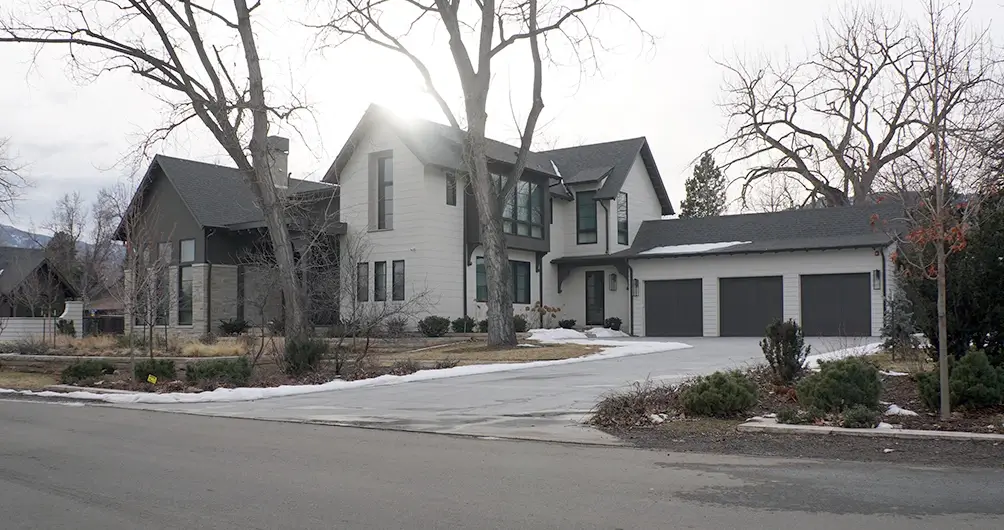 Exteriors
Top 100 Best Home Exterior Ideas – The Most Beautiful Home Exteriors
Exteriors
Top 100 Best Home Exterior Ideas – The Most Beautiful Home Exteriors
In the vast, electrifying world of home exteriors, where the echo of relentless spirit meets architectural...
 Exteriors
Top 100 Best Concrete Exterior Ideas – Exterior Concrete House Designs
Exteriors
Top 100 Best Concrete Exterior Ideas – Exterior Concrete House Designs
There are those who settle for the ordinary, and then there are visionaries who recognize that...
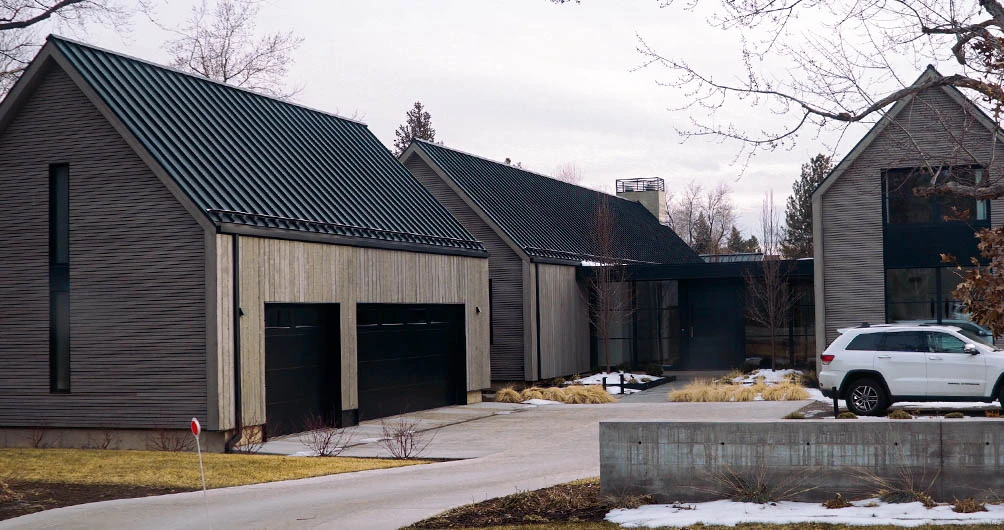 Exteriors
Exterior Vertical Siding Ideas – Top 100 Best Home Vertical Siding Designs
Exteriors
Exterior Vertical Siding Ideas – Top 100 Best Home Vertical Siding Designs
You know what, folks? I’m Brian Cornwell and when it comes to shaking things up, I’m...
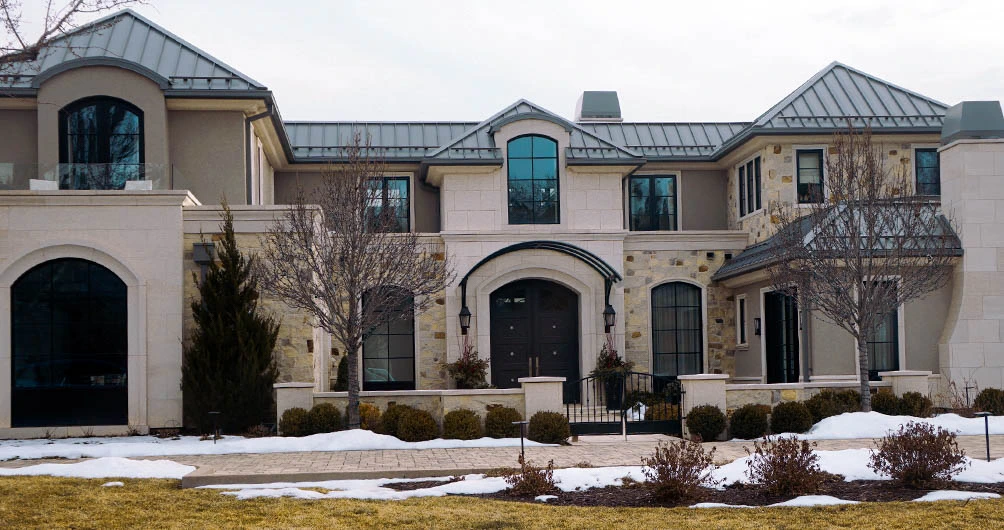 Exteriors
Top 100 Best Natural Stone Home Exterior Ideas – Stone Home Exterior Designs
Exteriors
Top 100 Best Natural Stone Home Exterior Ideas – Stone Home Exterior Designs
When it comes to decking out your palace, nothing screams “I’ve made it” quite like wrapping...
 Exteriors
Top 100 Best Brick Home Exterior Ideas – Traditional Brick Home Exterior Designs
Exteriors
Top 100 Best Brick Home Exterior Ideas – Traditional Brick Home Exterior Designs
The absolute embodiment of excellence and grandeur: Brick exteriors. Imagine stepping into a world where tradition...
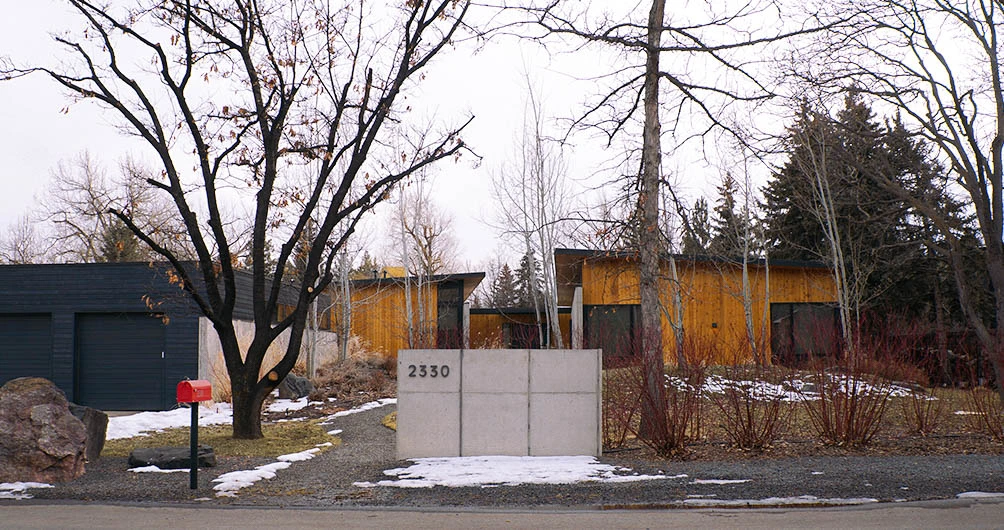 Exteriors
Top 100 Best Cedar Home Exterior Ideas – Stained Wood Home Exterior Designs
Exteriors
Top 100 Best Cedar Home Exterior Ideas – Stained Wood Home Exterior Designs
Not just built but passionately crafted from the soul of the earth: cedar. Cedar, my friends,...
 Exteriors
Home Siding Ideas – Top 100 Best Exterior House Siding Designs
Exteriors
Home Siding Ideas – Top 100 Best Exterior House Siding Designs
Brian Cornwell here to school you on turning your home into the goddamn eye candy of...